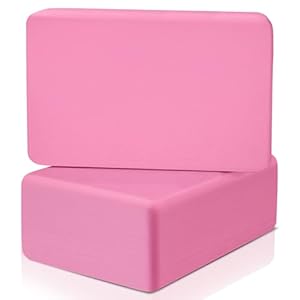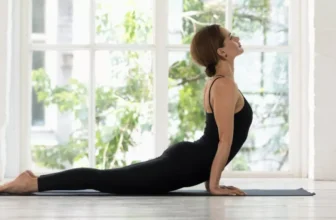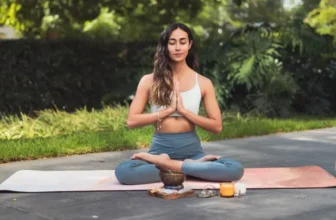
If you’ve ever wondered about the potential of yoga to rapidly enhance your flexibility, the answer may surprise you. The practice of yoga offers a myriad of benefits that extend beyond the physical realm. By exploring the relationship between breath and movement, fostering a greater mind-body connection, and honing in on specific muscle groups, yoga can pave the way for remarkable improvements in flexibility. But how exactly does this ancient practice work its magic on your body?
Benefits of Yoga for Flexibility
Improving your flexibility through yoga can lead to increased range of motion and reduced risk of injury. By regularly practicing yoga, you can enhance the elasticity of your muscles and improve your overall mobility. This increased flexibility not only allows you to move more freely but also helps in preventing strains and sprains during physical activities.
Additionally, yoga helps to improve your posture and alignment, which can alleviate aches and pains caused by muscle imbalances. As you work on your flexibility through various yoga poses and stretches, you’re also strengthening the muscles around your joints, providing them with better support and stability. This, in turn, can help reduce the risk of injuries, especially in high-impact sports or activities.
Furthermore, increased flexibility gained from yoga can enhance your athletic performance by allowing you to move more efficiently and effectively. Whether you’re a professional athlete or simply enjoy staying active, having a flexible body can positively impact your overall fitness level and well-being.
Key Yoga Poses for Flexibility
Enhance your flexibility by incorporating these key yoga poses into your regular practice routine. Start with the Downward Facing Dog pose, which stretches the entire backside of your body, from your heels to your shoulders. This pose also helps lengthen and release tension in the spine.
Move on to the Triangle pose, which opens up the hips and hamstrings while also increasing spinal flexibility. The Cobra pose is another essential posture that strengthens the back muscles and improves flexibility in the spine.
For tight hip flexors, try the Pigeon pose to increase hip mobility and release tension in the hips. The Butterfly pose targets the inner thighs and groin area, promoting flexibility in those regions. Lastly, the Seated Forward Bend pose stretches the hamstrings and lower back, aiding in overall flexibility.
Incorporating these key yoga poses into your routine regularly will gradually enhance your flexibility and help you progress in your practice.
Tips for Progressing Quickly
To expedite your progress in yoga flexibility, focus on consistent practice and proper alignment in each pose. Consistency is key when it comes to improving your flexibility through yoga. Make a commitment to practice regularly, even if it’s just for a short amount of time each day. This will help your body adapt to the poses and gradually increase your flexibility.
Pay close attention to your alignment in each pose. Proper alignment not only ensures that you’re getting the full benefits of the pose but also helps prevent injuries. Listen to your body and make adjustments as needed to maintain the correct alignment. Engage your core muscles to support your spine and protect your lower back during stretches.
Use props such as blocks, straps, or bolsters to assist you in achieving proper alignment and getting deeper into poses. Props can help you reach further without straining your muscles. Remember to breathe deeply and relax into each stretch, allowing your body to release tension and increase its flexibility over time. By following these tips and staying dedicated to your practice, you’ll see improvements in your flexibility quickly.
Incorporating Yoga Into Your Routine
To seamlessly integrate yoga into your routine, start by identifying pockets of time in your day where you can dedicate to your practice. Whether it’s early morning, during a lunch break, or in the evening, finding a consistent time will help you establish a routine. Consider starting with shorter sessions and gradually increasing the duration as you become more comfortable. Setting realistic goals for how often you want to practice can also help you stay committed.
Create a dedicated space for your practice, even if it’s just a small corner of a room. Having a designated area can help signal to your brain that it’s time to focus and unwind. Keep your yoga mat, props, and any other essentials in this space so you can easily jump into your practice without any distractions.
Additionally, consider mixing up your routine by trying different styles of yoga or attending classes to keep things interesting. Remember, the key is to make yoga a consistent part of your schedule to see improvements in your flexibility over time.
Tracking Your Flexibility Gains
You can monitor your progress in flexibility by regularly measuring your range of motion and noting any improvements. One effective way to track your flexibility gains is by using a flexibility journal. In this journal, record the specific yoga poses or stretches you perform, along with the date and any observations about your flexibility during that session. By documenting your flexibility journey, you can visually see how far you’ve come and identify any patterns or trends in your progress.
Another method to track your flexibility gains is through regular flexibility assessments. These assessments can include measuring how close you can reach towards your toes while standing or how far you can stretch in a particular yoga pose. By conducting these assessments at consistent intervals, such as every two weeks, you can objectively see improvements in your flexibility over time.
Yoga














